|
Decibel Dungeon
|
|
|
|
I remember reading all the excitement about Gainclones on various forums and thinking to myself that it was surely all a big joke, or a case of the king's new clothes. A chip designed to go inside televisions and the like, and no more than a few external components, and it sounds good? But more and more people were building them and reporting the same positive news so one day I resolved to build one, just to prove to myself that I was better off with my more traditional discrete amplifiers.
|
|
Fortunately, I already had a couple of toroidal mains transformers, the most costly component in a Gainclone (if you exclude the case that isn't mandatory). I ordered the other parts from Maplin and Farnell and set about building two mono blocks using the LM3875. That is the GC described here. I will remember the sensation the first time that I played music through those little wooden tubes for the rest of my life! I was transfixed. I didn't want to leave the room in case it was a dream and when I came back, they would sound awful! It's fair to say that I was hooked on GC's from then!
|
|
It wasn't long before the GC's replaced my good old Arcam A60's in my main system. But it was clear that using only a pot to control the volume left the sound lacking some oomph. I knew enough to know that it was almost certainly a question of impedance matching and decided that I needed a pre amp or active buffer in front of the GC. I remember discussing this with Pedja Rogic who helped me come up with the idea for a buffered GC using the OPA627 opamp. Pedja also suggested using a low pass filter in between the buffer and GC. The result was my second GC described here and it was a big improvement over the basic GC mono blocks.
|
|
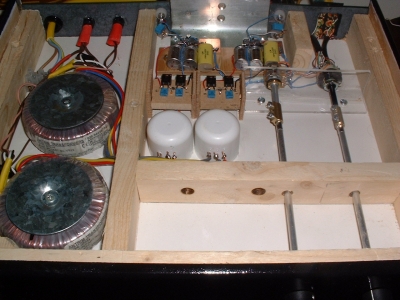
|
|
Both these first two Gainclones used the inverted circuit as suggest by Thorsten Loesch. When a friend brought his 'broken' Arcam A60 to me for repair, I decided to replace it's internals with another GC but this time using the non-inverting circuit, primarily to hear it for myself. What I learned from that was despite some heated debate, neither inverting, nor non-inverting versions of the GC sounded better than the other, rather they sounded slightly different. I still find it hard to say which I prefer to this day and other things that you can do with a GC will affect the sound more, so I no longer really consider it an issue.
|
|
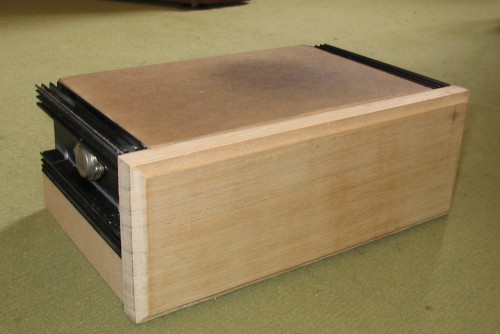
|
|
By now, Gaincloning had become a serious hobby and all sorts of suggestions were being made for improving the basic circuits. Regulating the power supply was one such suggestion so I tried that using the LM338 voltage regulators. Although I could hear some improvements with the regulated supply, somehow the GC had lost what made it sound magical and this GC didn't stay very long in my system. Even tweaking the regulators following the tips by Carlos Machado didn't make me a big fan of the regulated GC and I went back to the more basic version.
|
|
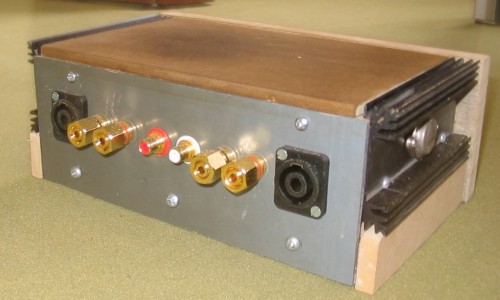
|
|
Another popular variation was to use a valve buffer. I'm not sure who was the first to do this but Joe Rasmussen had published a design on his web site, a more basic version of an amplifier that he was selling commercially. I followed that design as described here and was pleased with the results. The tube buffer did indeed add something to the GC that made it very pleasant sounding. I also spent the most time on building the VBICG, most of the time going on the elaborate case-work rather than the usual plank of wood, or cases made from scraps.
|
|
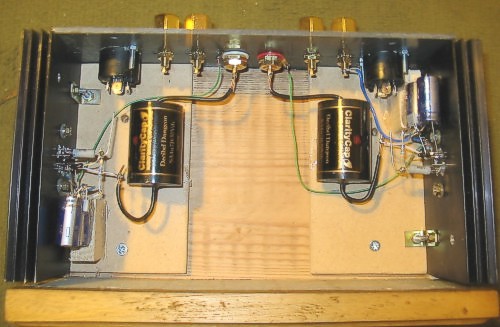
|
|
The VBIGC stayed in my system for quite some time and I can't remember now why I took it out. It was possibly around the time that I started playing with the class-T amps but I didn't find that they satisfied me as much as the GC's and went back to the OPA627 buffered GC for some reason.
|
|
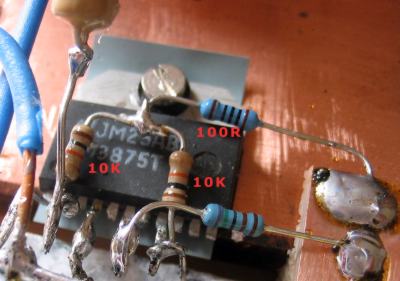
|
|
Yet another 'GC 'teak' was using the T-network feedback resistor circuit. I tried it but found it was noisier than a single feedback resistor and didn't (to my ears) sound any better!
|
|
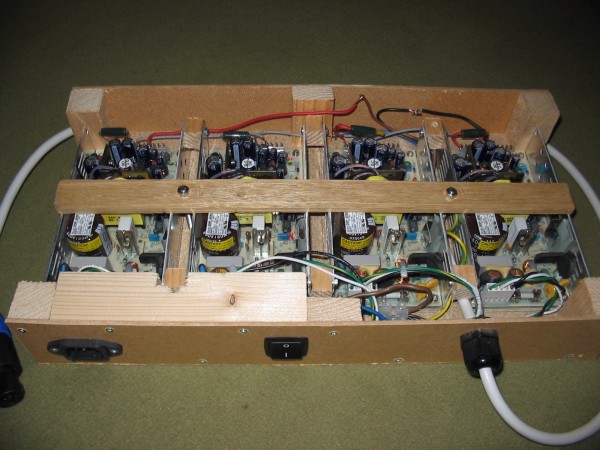
|
|
Around that time I met a local guy who was selling stuff on Ebay. He had some 12 volt SMPS modules and offered to let me try them. I had seen one or two people suggesting computer PSUs for use with Gainclones but I always felt that was a 'cheap' solution that could only result in a harsh and unsatisfying sound. However, not wishing to offend, I tried the SMPS and was completely shocked by what I heard. You can read about that experience here. For quite a while I enjoyed an SMPS powered GC in my main system.
|
|
Recently (November 2007) I got round to trying the Pedja Rogic discrete regulated GC. Actually, I had built the regulators a few years ago and put them in an LM3886 amplifier. I prefer the sound of the LM3875 to the LM3886 so this amp got 'relegated' to powering my augmenting woofers. What I didn't realise was that I was 'hiding away' potentially one of the best GC PSUs. Anyway, the discrete regulators are in my current four-channel IGC that I use for bi-amping and the results are good enough to make me think this is as far as I go with the GC. I would like to try the SMPS thing again but unfortunately, while a +/-24V SMPS works fine in my second system, I am getting weird noises through the speakers in the main system. So for now the discrete regulated IGC is the one I use in the main system.
|
|
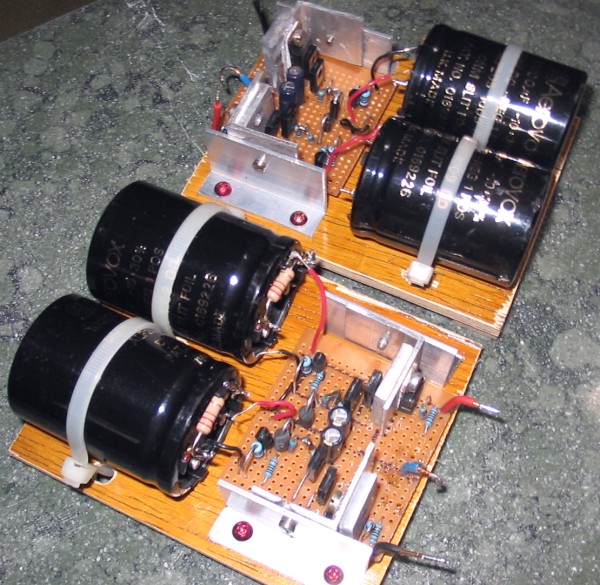
|
|
I should also mention that I built two non-inverting GC's (or should I say chip-amps) using the OPA541 chips. One pair of the ordinary chips and one pair of the TO-3 cased chips. Both these GC's sounded very good to me and I certainly like the OPA541 as much as the LM3875. They have a lower gain than the LM3875 chips though and will usually require some gain in a preceding pre amp or buffer! I actually built the OPA541 amps to go after a valve pre amp with plenty of gain.
|
|
I have also run a GC off two 12 volt car batteries (to get a +/-12v supply). Battery power has its merits but I preferred it when I went back to a mains PSU. Perhaps four batteries and a +/-24v supply is better, but I found the +/-12v lacking in dynamics.
|
|
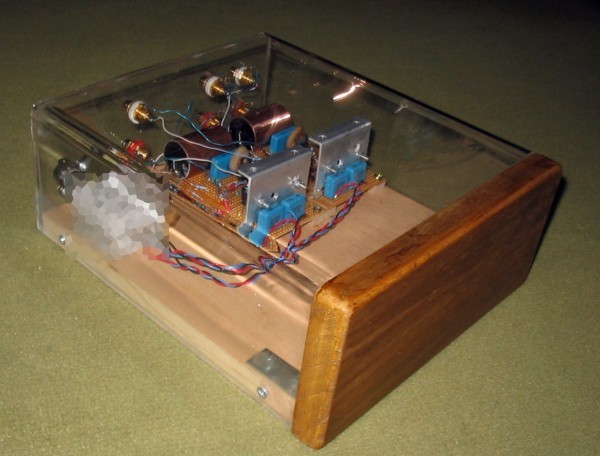
|
|
Well, if it is not clear what I recommend yet, let me summarize. I prefer the sound of the LM3875, and OPA541 (now discontinued) chips the best (although I haven't heard all the chips by any means). I don't think you need to worry too much about inverting or non-inverting, although if you are a beginner with GC's, it is probably safer to stick with the non-inverting version to avoid conflicts with what you use prior to the GC. A basic version will sound good if you have easy-to-drive loudspeakers (very important to remember) and providing there are no impedance matching issues with your source or volume control. The discrete regulated will give you a more powerful sound though and should work with a wider range of speakers as well. In my experience you can't just install larger capacitors in a GC without taking away the mid-range 'magic'! For the ultimate GC I would say go back to another of Pedja Rogic's designs and add his discrete Jfet buffer and LPF in the same case as the discrete regulated IGC. Or try the SMPS route with any GC - you will be pleasantly surprised.
|
|
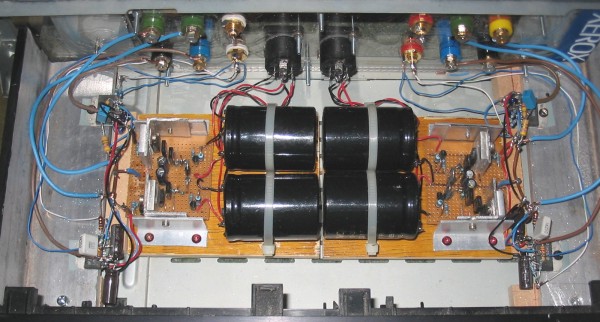
|
|
Probably the best advice that I can give anybody on building a GC is to just do it. Don't agonize on which design is 'better'. Don't waste ages trawling the forums to find the 'best' capacitors or resistors to use. Just get some bits and build a basic GC, listen to it, learn it's good points and its short-comings, then try some of the many options and see what you like. Nobody can really tell you that, and much of the fun of Gaincloning is experimenting and discovering what works best for yourself. After all, we all have differing tastes!
|
|
So what is my final verdict on the good old GC, or chip-amp? Well it isn't the best amplifier in the world but it has a sound that is very appealing, ie it is very musical! It was probably the cheapest solution for a good sounding amplifier but then along came the class-T amps. I've already said which I prefer though. Yes, I have heard better amps than the GC but they all cost much more money. The cost of good hi-fi is coming down rapidly now as Chinese made equipment floods the market but being a GC owner is not only about budget hi-fi. It's about the satisfaction of sitting there reminding yourself that you built the amp that you are listening too. It's about being able to play about with the GC to change the sound instead of going out and buying new equipment to get the same changes. My advice hasn't changed too much over these four years. First and foremost just build one. Trust the thousands of satisfied Gaincloners who have already taken that route. Some of them have moved on to other amplifiers but a vast majority still enjoy their GC's. If you have come to this section looking for a specific suggestion then I offer you two. The Pedja Rogic IGC with discrete regulated PSU and discrete buffer. Or an LM3875 or OPA541 non-inverting GC with a +/-24v SMPS, and the PR discrete buffer.
|
|
UPDATE December 2008
I really thought that I was coming to the end of an era with my Gaincloning activities. Then along came something that got me as enthusiastic as I had been when I built the first one all those years ago. I'm talking about something called the Resurrector, the invention of a Polish gentleman called Marek Klimczak. I did a review of one his first Resurrectors for TNT-Audio and you can read that here. And of course, I have a Resurrector page here on Decibel Dungeon. Believe me, it really works and takes chip amps to another level!
|
|
Have fun because that is what Gaincloning is all about. But also remember to be safe now rather than sorry later.
|
| Site menu
Page menu
|
|
|








